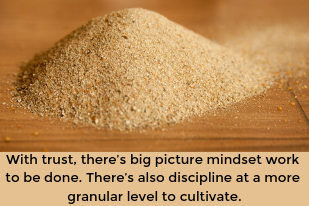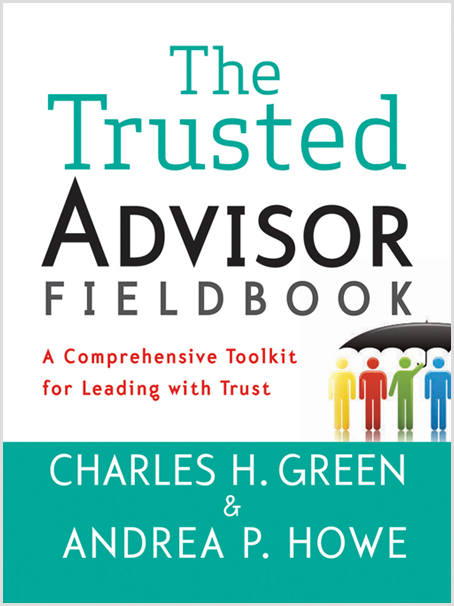This post is part of our Weekly Tips series.

Charlie Green and his The Trusted Advisor co-authors assert that trust is often built with small gestures. Building on that theme, consider the importance of what I’ve recently come to call “micro-moments,” and how you train yourself to respond in them.
Sure, there’s a lot of big picture mindset work to be done when it comes to trusted advisorship—like focusing on principles and values. There’s also discipline at a more granular level to cultivate.
Consider that the first and immediate reaction of a trusted advisor is distinct. Take the following two scenarios:
- How do you reply to a client’s urgent request for help with a problem? I covered this in greater depth in a prior Weekly Tip called, “A test: What would the trusted advisor say next?” The gist: When you see your value as a trusted advisor, or safe haven for tough issues, and your client opens a conversation by saying, “We’ve REALLY got to solve the XYZ problem!” you’ll say something like this:
“Uh oh, that doesn’t sound good.”
And then you’ll pause to see where they take the conversation.
This particular micro-moment requires savvy professionals—most of whom are hard-wired to don a hero cape and fix stuff—to respond in a dramatically different way that reflects a profoundly different relationship.
- What do you say when someone’s emotional reaction triggers you? We humans are transmitting our emotions all the time, even if it’s subtle. And we humans also do better with some emotions than with others when we’re on the receiving end. Enter another micro-moment that gives you a pivotal opportunity to be more trustworthy, and more powerful.
Reference point: I recently had workshop participants do a two-person drill. First, each person shared the emotion/reaction that they generally find the most difficult to deal with (like anger, frustration, anxiety, sadness, ambivalence).Then, each got to practice being on the receiving end of exactly that emotion while their partners acted it out for 15 seconds.Finally—and this is the important part—the triggered person got to practice two very specific skills (and only two) for another 15 seconds: Paraphrase and empathize.
No problem-solving. No deflecting. No defending. No attempts to change the other’s emotional state. Just reflecting back both content and emotion, in the face of their own S-triggering emotional reactions in the moment.
Just about everyone struggled with it. (Even fifteen seconds is surprisingly long.) Which is exactly why it’s good to do this kind of drill practice on the regular.
Our everyday interactions certainly go well beyond these micro-moments. It’s just so much easier to set a more trustworthy tone and course by starting off on the right foot.
Make It Real
This week, make time with a colleague to do some drill practice to get better at your own micro-moment responses.
Learn More

Brush up on why understanding the four levels of relationships is critically important, or find additional improv-inspired drills in Chapter 8 of The Trusted Advisor Fieldbook.
Andrea Howe
Latest posts by Andrea Howe (see all)
- A lesson from my own trust “fail” in my first-ever client meeting - April 15, 2024
- Why choosing silence in the face of awkwardness can be a trust tragedy - March 21, 2024
- What NOT to do when you think you’re being ghosted - February 21, 2024
